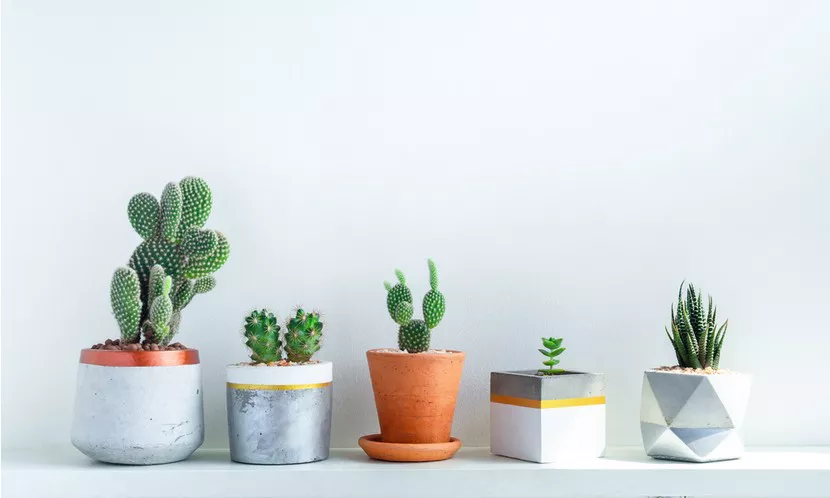Succulents have gained immense popularity in recent years due to their unique appearance, low maintenance requirements, and adaptability to various environments. Among the diverse succulent family, dolphin succulents (Senecio peregrinus) and their close relatives stand out for their striking resemblance to leaping dolphins, making them a favorite among plant enthusiasts. In this comprehensive guide, we will delve into the care and maintenance of dolphin succulents, explore related species, and provide valuable insights for keeping these mesmerizing plants thriving.
Understanding Dolphin Succulents
1. Appearance and Origin
Dolphin succulents, scientifically known as Senecio peregrinus, belong to the Asteraceae family and are native to South Africa. These fascinating plants earned their common name due to the unique leaf shape, which resembles miniature leaping dolphins. The leaves are green with white, finger-like markings, adding to their charm. Dolphin succulents are typically small, reaching a height of 4-6 inches, making them ideal for both indoor and outdoor gardens.
2. Light Requirements
One of the fundamental aspects of dolphin succulent care is providing the right amount of light. These plants thrive in bright, indirect sunlight. While they can tolerate some direct sunlight, it’s essential to protect them from scorching rays, which can lead to sunburn. A sunny windowsill with filtered sunlight or a partially shaded outdoor area is ideal.
3. Watering
Succulents are renowned for their ability to store water, making them drought-tolerant. Dolphin succulents are no exception. Water sparingly and allow the soil to dry out completely between waterings. Overwatering is a common mistake that can cause root rot. During the growing season (spring and summer), water once every 2-3 weeks, and reduce watering in the dormant period (fall and winter) to once a month or less.
4. Soil Requirements
Well-draining soil is crucial for the health of your dolphin succulents. A cactus or succulent potting mix is ideal. You can also create your mix by adding sand or perlite to standard potting soil to enhance drainage. Ensure the pot has drainage holes to prevent water from pooling at the roots.
5. Temperature and Humidity
Dolphin succulents thrive in moderate temperatures between 60-80°F (15-27°C). They are not frost-tolerant, so protect them from freezing temperatures. While they can tolerate low humidity, they appreciate some added humidity, especially in dry indoor environments. You can mist the leaves occasionally or place a tray of water with pebbles near the plant to increase humidity.
Propagation and Maintenance of Dolphin Succulents
1. Propagation Methods
If you’re eager to expand your collection of dolphin succulents or share them with friends, you’ll be pleased to know they are relatively easy to propagate. The two primary methods of propagation are:
Leaf Cuttings: Gently remove a healthy leaf from the parent plant, let it air dry for a day or two to form a callus, and then plant it in a well-draining succulent mix. Keep the soil lightly moist until new growth emerges.
Stem Cuttings: Snip a healthy stem section and allow it to callus for a few days. Plant the callused end in soil, and new roots and shoots will develop over time.
2. Pruning
Dolphin succulents don’t require extensive pruning, but occasional trimming can help maintain their shape and encourage bushier growth. Remove any dead or wilted leaves or stems using clean, sharp scissors or pruning shears.
3. Fertilizing
Fertilize sparingly during the growing season, typically once a month, using a diluted, balanced liquid succulent fertilizer. Avoid over-fertilizing, as excess nutrients can harm the plant.
Pests and Common Issues of Dolphin Succulents
1. Pest Management
Dolphin succulents are generally resistant to most pests due to their succulent nature. However, they can occasionally attract common succulent pests such as mealybugs, aphids, or spider mites. Inspect your plants regularly, and if you spot any pests, remove them with a gentle spray of water or use a neem oil solution as a natural remedy.
2. Common Problems
Yellowing Leaves: This could be a sign of overwatering or insufficient light. Adjust your watering schedule and provide more indirect sunlight if needed.
Leggy Growth: Leggy or stretched growth indicates the plant is not getting enough light. Move it to a brighter location and prune leggy stems to encourage bushier growth.
Root Rot: Overwatering or poorly draining soil can lead to root rot. Trim affected roots and repot the plant in well-draining soil.
Conclusion
Caring for dolphin succulents and their related species is a rewarding experience, thanks to their charming appearance and low maintenance requirements. By providing the right light, water, and well-draining soil, you can keep these unique succulents thriving in your home or garden. Don’t forget to explore the diverse world of Senecio succulents, as they offer an array of captivating shapes and forms to complement your collection. With proper care and attention, you can enjoy the beauty of these remarkable plants for years to come.


